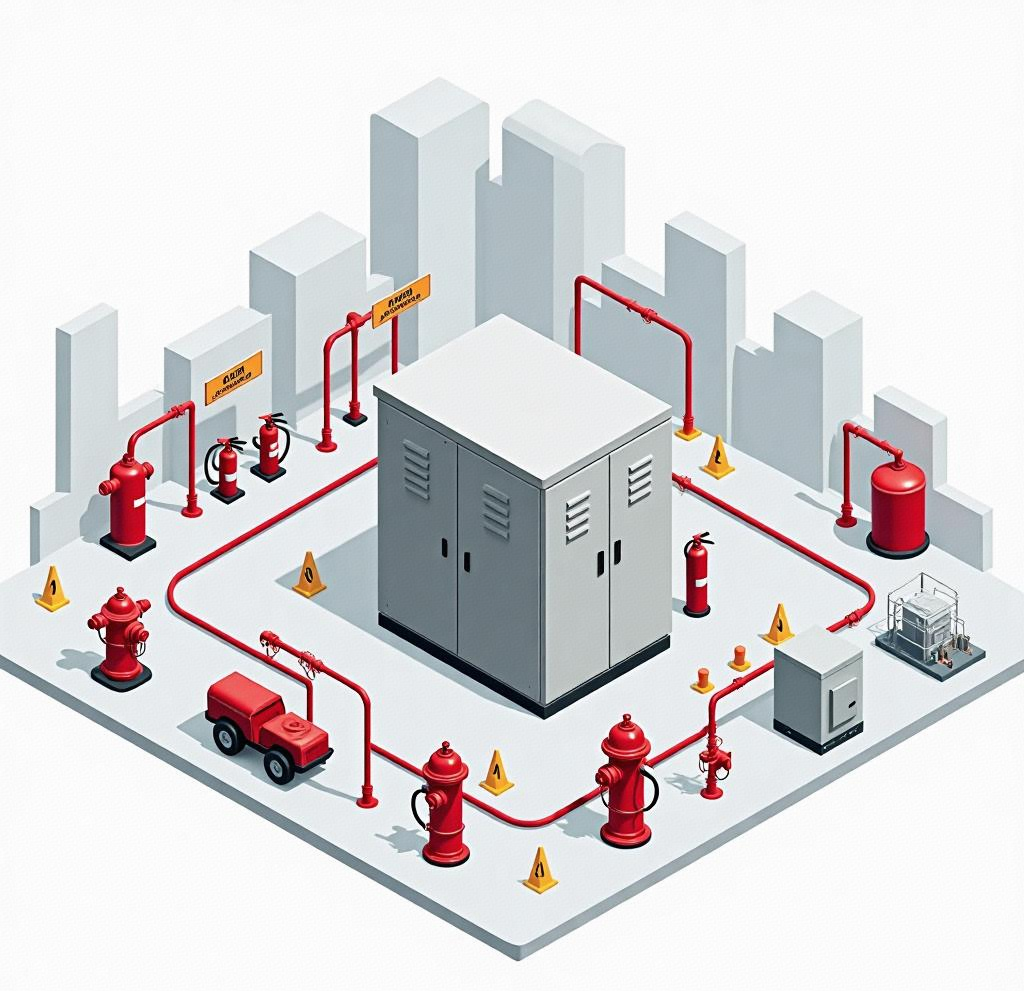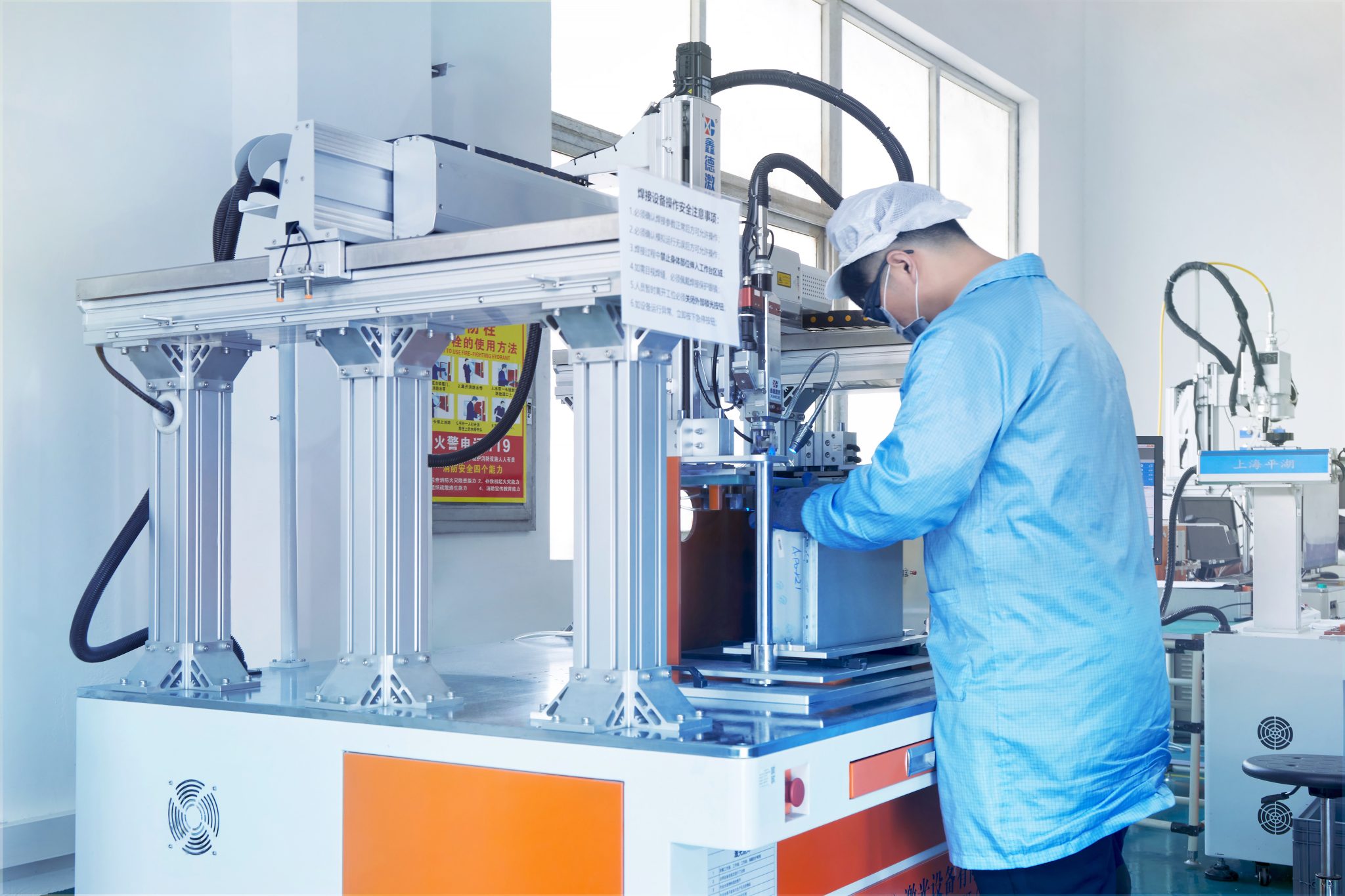What Is an Energy Storage System?
An energy storage system (ESS) is a technology that captures and stores energy for later use, enhancing power reliability and efficiency. ESS solutions help manage energy demand, integrate renewable sources, and provide backup power, reducing dependence on the grid and improving energy sustainability. These systems are essential for industries, businesses, and residential applications looking to enhance energy security and reduce operational costs.

Table of Contents
Why Is Fire Protection Important in Energy Storage Systems?
Energy storage systems play a crucial role in modern energy infrastructure, particularly in renewable energy integration and grid stabilization. However, as the adoption of ESS increases, so do concerns about fire hazards associated with lithium-ion battery technology. Fire protection measures are essential to mitigate risks, ensure regulatory compliance, and protect lives and property from catastrophic failures.
ESS fires can be caused by various factors, including electrical faults, mechanical damage, overheating, and external environmental conditions. The risk of thermal runaway, in which a battery cell overheats and triggers a chain reaction, is particularly concerning. Effective fire protection strategies involve preventive maintenance, early detection systems, and proper fire suppression measures. Without these safeguards, an ESS fire can result in extensive property damage, financial losses, and safety hazards for personnel and emergency responders.
What Are the Risks Associated with Battery Energy Storage Systems?
Battery energy storage systems (BESS) pose fire risks due to potential thermal runaway, leading to overheating, fire, and toxic gas emissions. Understanding these risks is crucial for implementing effective fire protection strategies. The risks vary depending on battery chemistry, system design, and operating conditions. Some of the primary hazards include:
Thermal Runaway: A self-sustaining chemical reaction that causes a rapid rise in temperature, leading to combustion.
Gas Emission: The release of flammable and toxic gases that can create explosion risks in confined spaces.
Electrical Faults: Short circuits or overvoltage conditions that can lead to overheating and system failure.
External Environmental Factors: Exposure to high temperatures, humidity, or physical damage that can degrade battery performance and increase fire risks.
What Are the Fire Safety Standards for Energy Storage Systems?
Regulatory bodies have established strict fire safety standards to ensure the safe deployment of energy storage systems. Two of the most important standards include NFPA 855 and UL 9540A.
NFPA 855: The National Fire Protection Association (NFPA) 855 provides installation standards for stationary ESS. It includes guidelines on system spacing, fire suppression requirements, ventilation, and emergency response protocols to minimize fire hazards.
UL 9540 and UL 9540A: UL 9540 certification ensures the overall safety of an energy storage system, while the UL 9540A test evaluates thermal runaway propagation and fire risks. This test is crucial in determining whether a system can prevent fire spread under failure conditions.
Other International Standards: IEC 62619 and IEEE 1635 provide additional safety guidelines, addressing battery management systems, thermal management, and risk mitigation strategies in ESS applications.
Compliance with these standards ensures that energy storage systems meet stringent fire safety requirements, reducing the likelihood of thermal incidents. Regular updates to these standards incorporate the latest advancements in battery technology and fire suppression methods, ensuring ongoing safety improvements in the industry
What Are the Combustion Characteristics of Batteries?
Understanding how batteries behave under failure conditions is critical for fire prevention and suppression. Lithium-ion batteries, widely used in ESS, have specific combustion characteristics that influence fire risks.
Thermal Runaway: A chain reaction triggered by overheating or internal faults can lead to a rapid rise in temperature, igniting electrolyte materials and producing flammable gases.
Gas Emission: When lithium-ion batteries fail, they release toxic and combustible gases such as hydrogen, carbon monoxide, and volatile organic compounds, increasing explosion risks in confined spaces.
Fire Propagation: Battery fires can spread rapidly due to the proximity of cells, making early detection and suppression vital.
Reignition Risks: Even after apparent extinguishment, lithium-ion batteries may reignite due to residual heat, requiring continuous monitoring.
Proper thermal management and early intervention strategies are essential to mitigate these risks effectively. Some advanced battery chemistries, such as lithium iron phosphate (LiFePO4), offer enhanced thermal stability, reducing the likelihood of thermal runaway.
What Is the Best Extinguishing Agent for a Fire in a Battery ESS?
Extinguishing fires in energy storage systems requires specialized agents due to the complexity of lithium-ion battery combustion. The most effective suppression methods include:
Water-Based Systems: While water is generally not recommended for electrical fires, specialized misting systems can help cool battery cells and prevent fire propagation.
Gaseous Suppression: Inert gases such as CO2, FM-200, and Novec 1230 can displace oxygen, slowing down combustion, but may not effectively cool cells to prevent reignition.
Dry Chemicals: Traditional dry chemical agents can suppress flames but may not halt thermal runaway or prevent gas emissions.
Aerosol-Based Suppressants: Advanced aerosol-based fire suppression systems are gaining popularity for their ability to disrupt chemical reactions and control fire spread in battery storage systems.
Liquid Immersion Cooling: Emerging technologies involve submerging batteries in dielectric coolants to prevent overheating and eliminate fire risks.
Choosing the appropriate extinguishing agent depends on the system design, fire risk assessment, and regulatory compliance. The integration of multiple suppression techniques, such as early gas detection combined with active cooling systems, provides the most effective fire mitigation strategy.
Have Hicorenergy’s Products Passed the ESS Fire Test?
Hicorenergy prioritizes safety and compliance in all its energy storage solutions. The company ensures that its products meet industry-leading safety standards, including the ESS Fire Test, UL 9540, and NFPA 855 regulations. By integrating advanced battery management and fire protection technologies, Hicorenergy provides secure and reliable energy storage systems for commercial and industrial applications. Hicorenergy’s products undergo rigorous testing procedures to assess fire propagation risks, ensuring compliance with the latest industry standards. The company’s commitment to innovation and safety makes its ESS solutions a preferred choice for businesses seeking reliable and fire-safe energy storage.
Summary of Hicorenergy’s Products
Hicorenergy offers cutting-edge energy storage solutions designed for safety, efficiency, and long-term reliability. With advanced thermal management, high-performance lithium batteries, and compliance with global fire safety standards, Hicorenergy’s ESS solutions provide secure and scalable energy storage for various applications. Its products integrate state-of-the-art safety features such as advanced BMS, fire suppression systems, and thermal barriers, ensuring industry-leading fire protection for energy storage applications..

-scaled.png)
